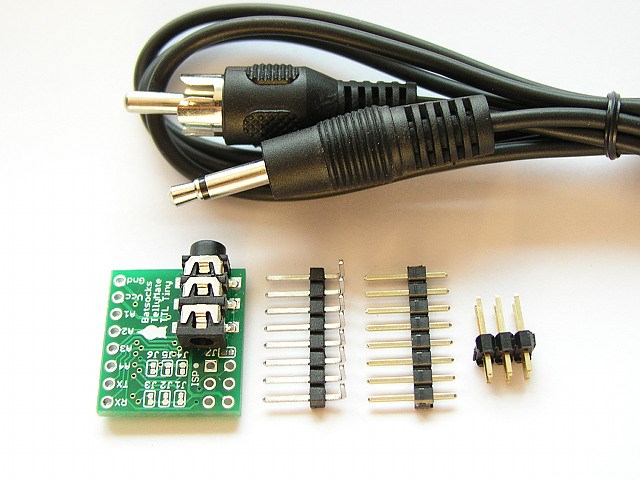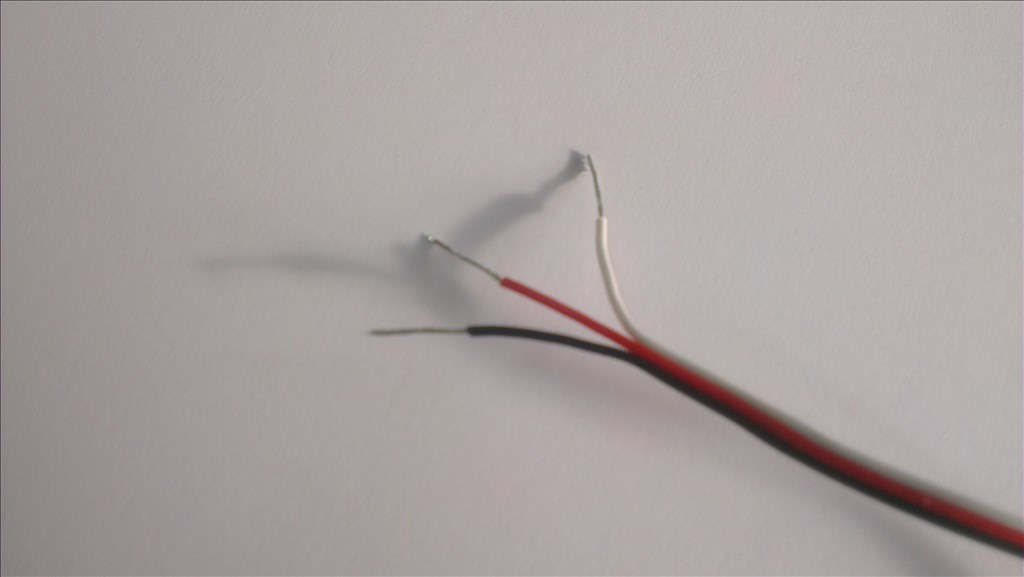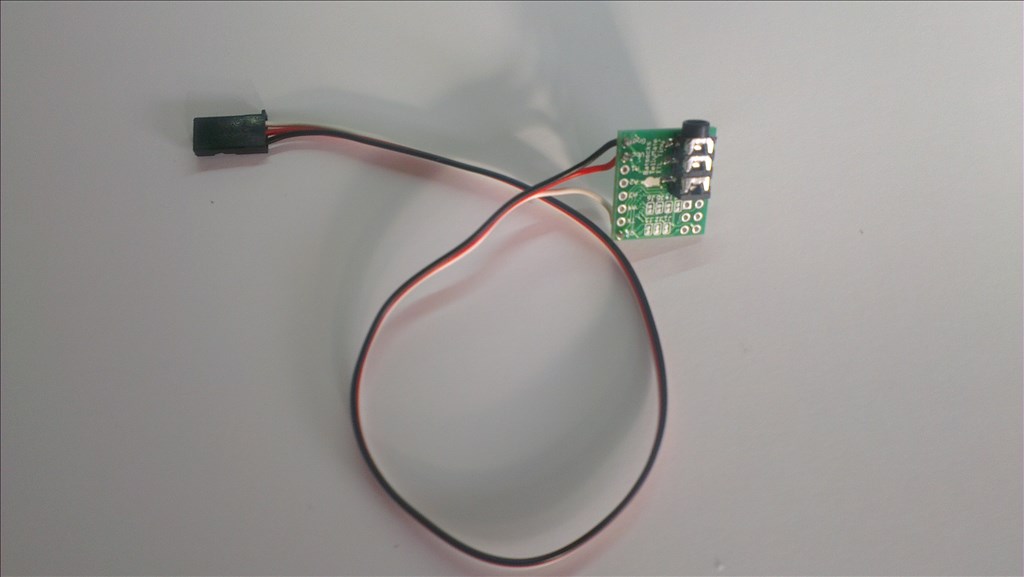Since it was mentioned a few days ago it has been at the forefront of my mind bugging me to play with it, so let's play
First I will cover the wiring of the TellyMate Tiny to the EZ-B and then I will cover how to use it.
So, when you get one it'll turn up and you have a bunch of bits;
- Composite Video Cable
- TellyMate Tiny board
- Angled Pin Headers
- Straight Pin Headers
- 3x2 Pin Header for ISP
First things first, ignore the pin headers. The simplest way to connect this to the EZ-B is with a accessory extension cable (or servo extension as they are sometimes called).
All the TellyMate Tiny needs is a Vcc, Ground and Serial data. Vcc can be 5V so direct from the EZ-B is fine, ground as usual can connect to any common ground and serial data is sent from the EZ-B signal pin, this needs to be received by the TellyMate so connects on to the RX pin not the TX.
First cut off the one end of the extension cable and strip back the wires (similar to the camera mod, Ultra Sonic sensor etc).
Next you need to solder the wires like so; Red to VCC Black to GROUND White to RX
That's it, it's ready to plug into any of the digital ports on the EZ-B. It really is that simple
One slight oversight is there are no mounting holes on the TellyMate Tiny. A small piece of sticky foam tape would be ideal to mount the board. Provided you leave access to the jack for the AV cable this will cause no problems. Sticking it to the back of the LCD screen/TV/Display seems like an ideal location too.
Now, in order to use the TellyMate you simply need to connect the output to a TV via the composite video input, select the correct channel and send the serial data to the TellyMate using the SendSerial() command in EZ-Script.
Further details to follow on the scripting and operation plus a quick review of the product and it's capabilities to aid you in deciding if it's right for your project. Stay tuned for updates




@Rich - Thanks for all the great work on the TellyMate examples/write-up! Glad that batsocks had an easy "fix" for the cursor positioning. I get how to position the cursor now with your updated info in post #2. Kudos!
The code should work on all variants of the TellyMate. There are functions I have not yet covered, such as redefining characters for example as these are not supported by the tiny. I hope to receive the other variant from Batsocks when they next make a batch up - if he remembers. If/when I do I will add those functions too along with connection tutorials for the boards.
I still have a few examples left to do, I want to show how to display sensor readings and update them within a fixed display. How to display bar graphs (if possible with the Tiny, I am unsure at the moment). Etc. More will come when I get the chance to play - it's just awkward since I mainly use my HTPC as a test rig which is connected to the TV that the TellyMate is also connected to.
Anyway, glad that the new hex method makes sense.
With a huge thank you to Batsocks.co.uk I now have two other variants of the TellyMate board which I will write up tutorials on for assembly (TellyMate TTL) and connection (TellyMate TTL and TellyMate).
I will also provide the updated code samples for using the functions which the TellyMate Tiny doesn't support. This will come in over the next few days.
Hi rich as you all know I am still a big inner in robotics and I do not know many definition so I hope I am not troubling you but what is a Telly mate
It's no trouble, this actually reminded me I still have the other Tellmate variants to cover too.
The Tellymate is a serial device which can output text and graphics to a TV through the composite connection. Similar to the LCD displays used in some robots but uses any display with a composite connection (the yellow plug, along the lines of scart). This means old TVs can be used as can small in car monitors.
They are a little out of date to be honest since you can pick up a small tablet which could be programmed to do a better job but if on a budget or want a retro feel these things are great.
If you have a look at the videos in this topic you should get an idea of what they do.